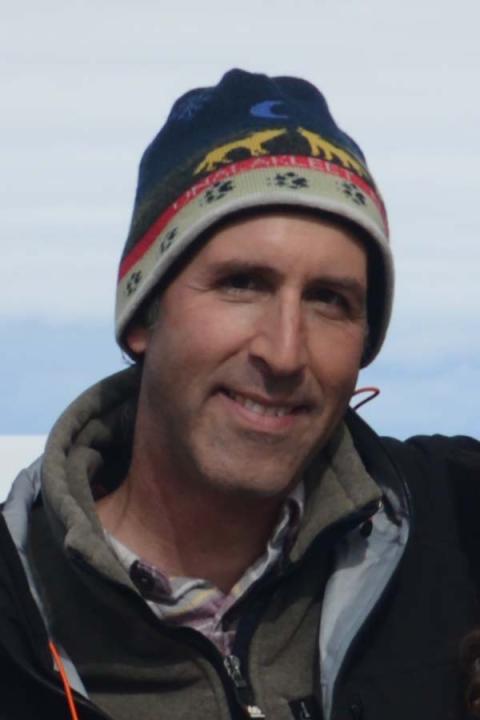
Joseph Licciardi
Courses Taught
- ESCI 402: Earth History
- ESCI 409: Geology and the Environment
- ESCI 561: Landscape Evolution
- ESCI 762/862: Glacial Geology
- ESCI 765: Paleoclimatology
- ESCI 765/865: Paleoclimatology
- ESCI 865: Paleoclimatology
- INCO 790: Advanced Research Experience
- TECH 411: Innovation Scholars I
- TECH 412: Innovation Scholars II
Education
- Ph.D., Geology, Oregon State University
- M.S., Geology, Oregon State University
- B.A., Geography, State University of New York at Geneseo
- B.A., Geology, State University of New York at Geneseo
Selected Publications
Morgan, L. A., Shanks, W. C. P., Pierce, K. L., Iverson, N., Schiller, C. M., Brown, S. R., . . . Licciardi, J. M. (2023). The dynamic floor of Yellowstone Lake, Wyoming, USA: The last 14 k.y. of hydrothermal explosions, venting, doming, and faulting. GSA Bulletin, 135(3-4), 547-574. doi:10.1130/b36190.1
Price, B. N., Stansell, N. D., Fernandez, A., Licciardi, J. M., Lesnek, A. J., Munoz, A., . . . Galilea, I. (2022). Chlorine-36 Surface Exposure Dating of Late Holocene Moraines and Glacial Mass Balance Modeling, Monte Sierra Nevada, South-Central Chilean Andes (38 degrees S). FRONTIERS IN EARTH SCIENCE, 10. doi:10.3389/feart.2022.848652
Walcott, C. K., Briner, J. P., Baichtal, J. F., Lesnek, A. J., & Licciardi, J. M. (2022). Cosmogenic ages indicate no MIS 2 refugia in the Alexander Archipelago, Alaska. Geochronology, 4(1), 191-211. doi:10.5194/gchron-4-191-2022
Stansell, N. D., Mark, B. G., Licciardi, J. M., Rodbell, D. T., Fairman, J. G., Schoessow, F. S., . . . Sorensen, M. (2022). Energy mass balance and flow modeling of early Holocene glaciers in the Queshque valley, Cordillera Blanca, Peru. QUATERNARY SCIENCE REVIEWS, 281. doi:10.1016/j.quascirev.2022.107414
Quirk, B. J., Huss, E., Laabs, B. J. C., Leonard, E., Licciardi, J., Plummer, M. A., & Caffee, M. W. (2022). Late Pleistocene glacial chronologies and paleoclimate in the northern Rocky Mountains. CLIMATE OF THE PAST, 18(2), 293-312. doi:10.5194/cp-18-293-2022
Carlson, A. E., Legrande, A. N., Oppo, D. W., Came, R. E., Schmidt, G. A., Anslow, F. S., . . . Obbink, E. A. (2008). Rapid early Holocene deglaciation of the Laurentide ice sheet. NATURE GEOSCIENCE, 1(9), 620-624. doi:10.1038/ngeo285
Licciardi, J. M., Clark, P. U., Brook, E. J., Elmore, D., & Sharma, P. (2004). Variable responses of western US glaciers during the last deglaciation. GEOLOGY, 32(1), 81-84. doi:10.1130/G19868.1
Clark, P. U., Marshall, S. J., Clarke, G. K. C., Hostetler, S. W., Licciardi, J. M., & Teller, J. T. (2001). Freshwater forcing of abrupt climate change during the last glaciation. SCIENCE, 293(5528), 283-287. doi:10.1126/science.1062517
Licciardi, J. M., Clark, P. U., Jenson, J. W., & Macayeal, D. R. (1998). Deglaciation of a soft-bedded Laurentide Ice Sheet. QUATERNARY SCIENCE REVIEWS, 17(4-5), 427-448. doi:10.1016/S0277-3791(97)00044-9
Clark, P. U., Alley, R. B., Keigwin, L. D., Licciardi, J. M., Johnsen, S. J., & Wang, H. X. (1996). Origin of the first global meltwater pulse following the last glacial maximum. PALEOCEANOGRAPHY, 11(5), 563-577. doi:10.1029/96PA01419